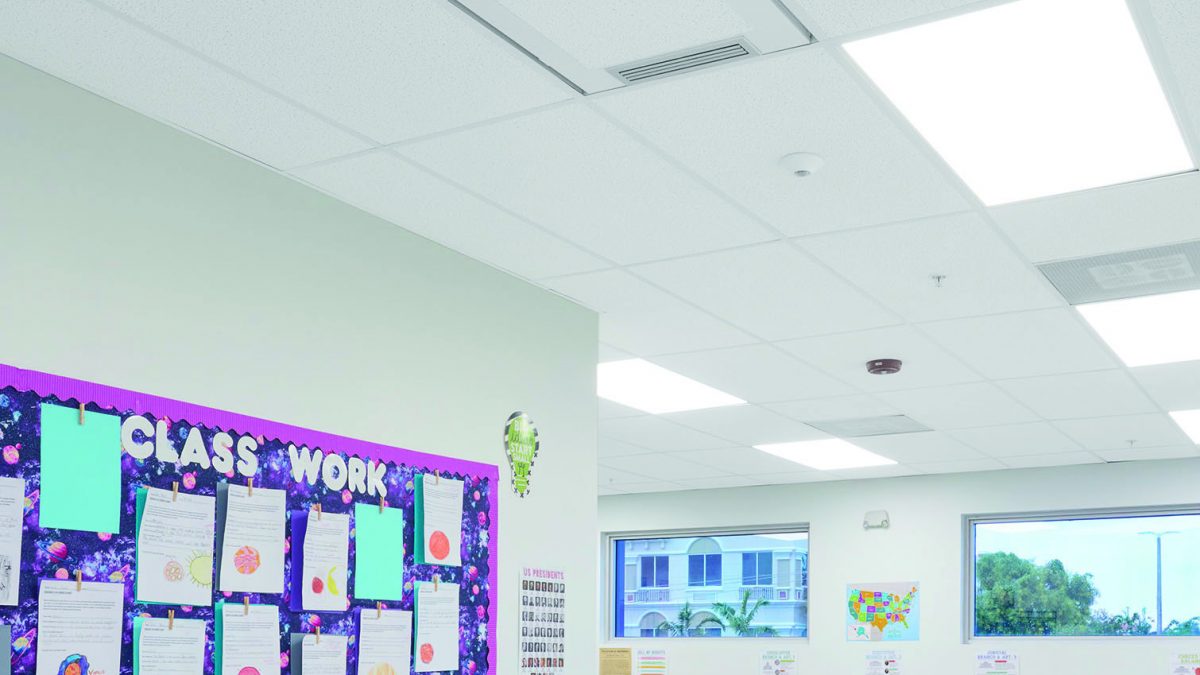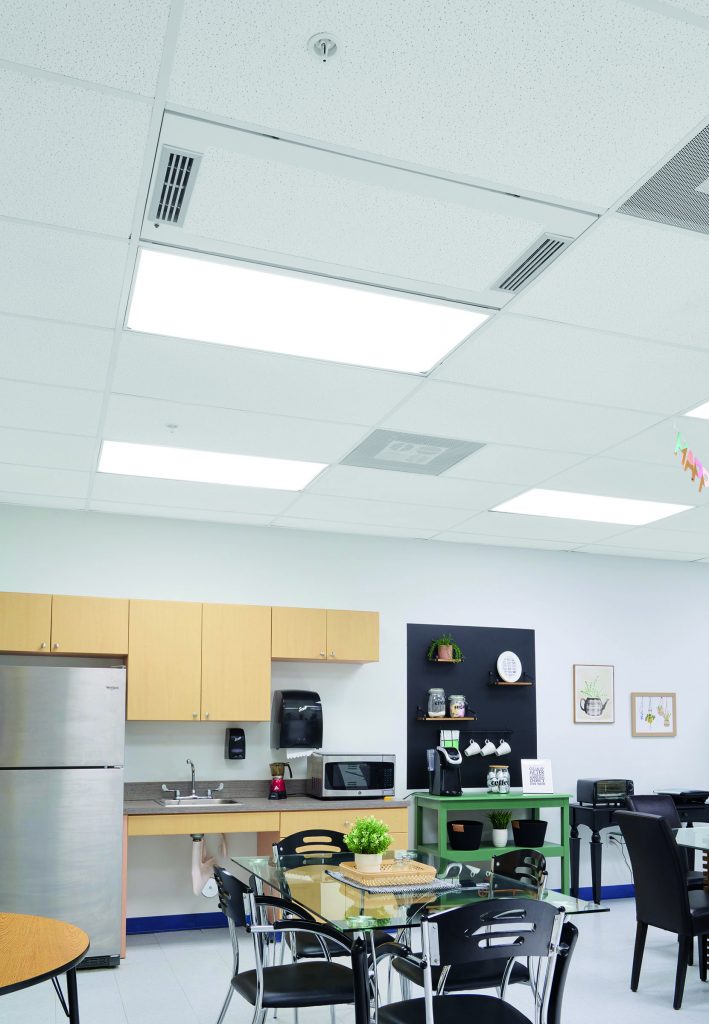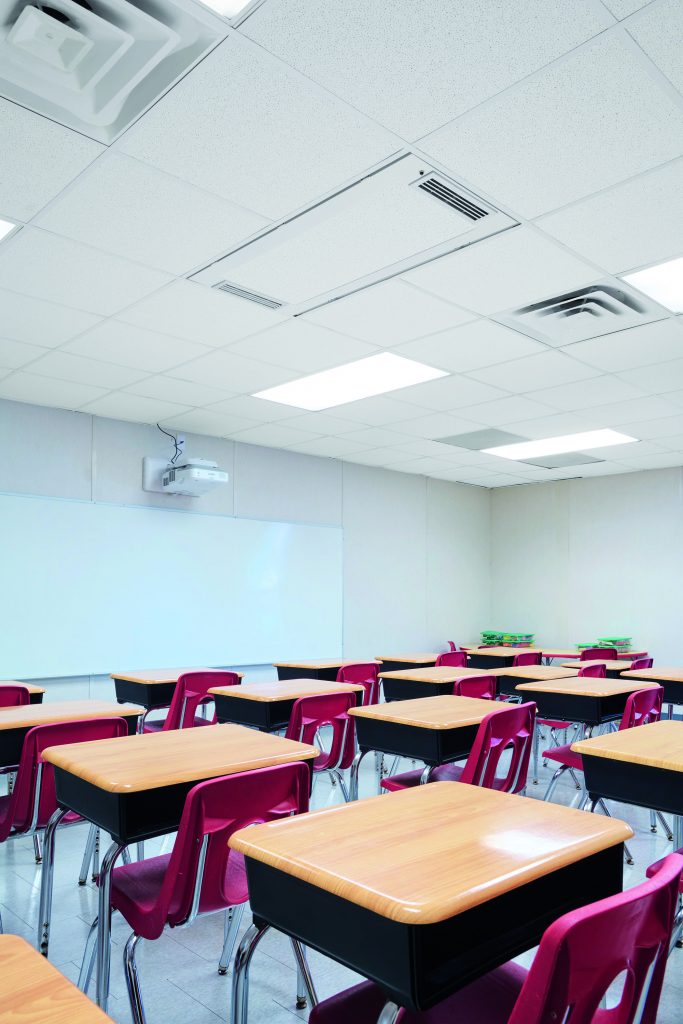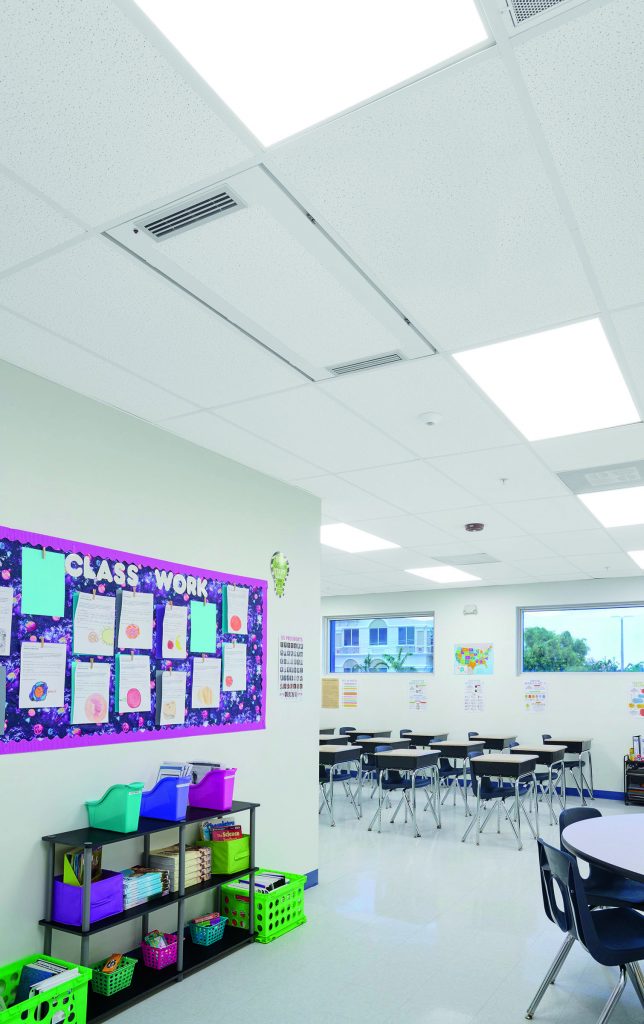

When BridgePrep Academy Charter Schools reopened for in-person learning at the beginning of the 2021-22 school year, school administrators wanted to reassure students, teachers and staff that they were returning to a safe, healthy indoor environment where they would be protected from the spread of Covid-19 and other airborne illnesses.
(During the 2020-2021 school year), the parents had the option of sending kids to school or keeping them at home. But (for the 2021-2022 school year), all the students were in school full-time.
Lourdes Pena, director of Facilities & Operations with SMART Management, which manages operations for the 16 charter schools BridgePrep Academy operates throughout Florida
Reducing the risk
To ensure safe, in-person learning, SMART Management began looking for innovative ways to implement the CDC’s recommendation to optimize ventilation and make improvements to indoor air quality (IAQ) to reduce the risk of viruses, bacteria, and fungi from spreading through the air.
With the passage of the American Rescue Plan Act in the spring of 2021, more than $122 billion in ESSER (Elementary and Secondary School Emergency Relief) funds became available to state education agencies throughout the country to keep K-12 schools open and ensure their safe operation in the wake of Covid-19.
After learning that a portion of the funds could be used toward heating, ventilation and air-conditioning (HVAC) corrections and filtration systems, SMART Management applied for an ESSER grant that would enable the company to make the upgrades needed to improve IAQ at the schools.
An innovative solution

When the grant was awarded in June 2021, the management firm took advantage of the summer break to replace faulty air-conditioning units and install Armstrong VidaShield UV24 air purification systems in ceilings throughout the schools.
The VidaShield units include shielded ultraviolet light and filtration which neutralizes 97 percent of bacteria, viruses, and allergens in the air. The 2’ x 4’ systems, which are paired unobtrusively with Armstrong School Zone Fine-Fissured ceiling panels, operate to draw air into a concealed chamber above the ceiling, treat it with patented, scientifically proven UV-C air-cleaning technology, and recirculate clean air back into the room.
About 500 VidaShield units have been installed throughout the schools. Most of the units are installed in classrooms because that’s where students spend most of their time. From there, we moved to common areas, such as the cafeteria, and from there, into hallways and offices.
Lourdes Pena
Extra layer of protection

When parents visited the buildings prior to the first day of school in the fall, they were able to see the VidaShield UV24 systems in place and learn how the new air cleaning technology operates.
The VidaShield units add an extra layer of protection that helps parents feel more comfortable about sending their kids back to school. It’s something they can actually see in place that is helping improve the quality of the air.
Lourdes Pena
The VidaShield systems have supplied teachers and staff with a sense of confidence knowing that a mechanism is in place to ensure their health and safety. Several BridgePrep Academy principals have noted that the VidaShield units are a key addition to their campuses. “We feel comfortable and safe in our school knowing that we are breathing clean air in an indoor environment,” said one of the principals.
Keeping students in school
Ventilation and filtration should continue to be key focuses for ways to keep students in school this year and beyond, according to a recent New York Times piece authored by Harvard public health scientist Dr. Joseph Allen.
These measures operate in the background and don’t require behavior changes, and they provide multiple benefits beyond preventing the spread of Covid. We should think of this as a once-in-a-generation opportunity to address decades of school infrastructure neglect.
Dr. Joseph Allen
